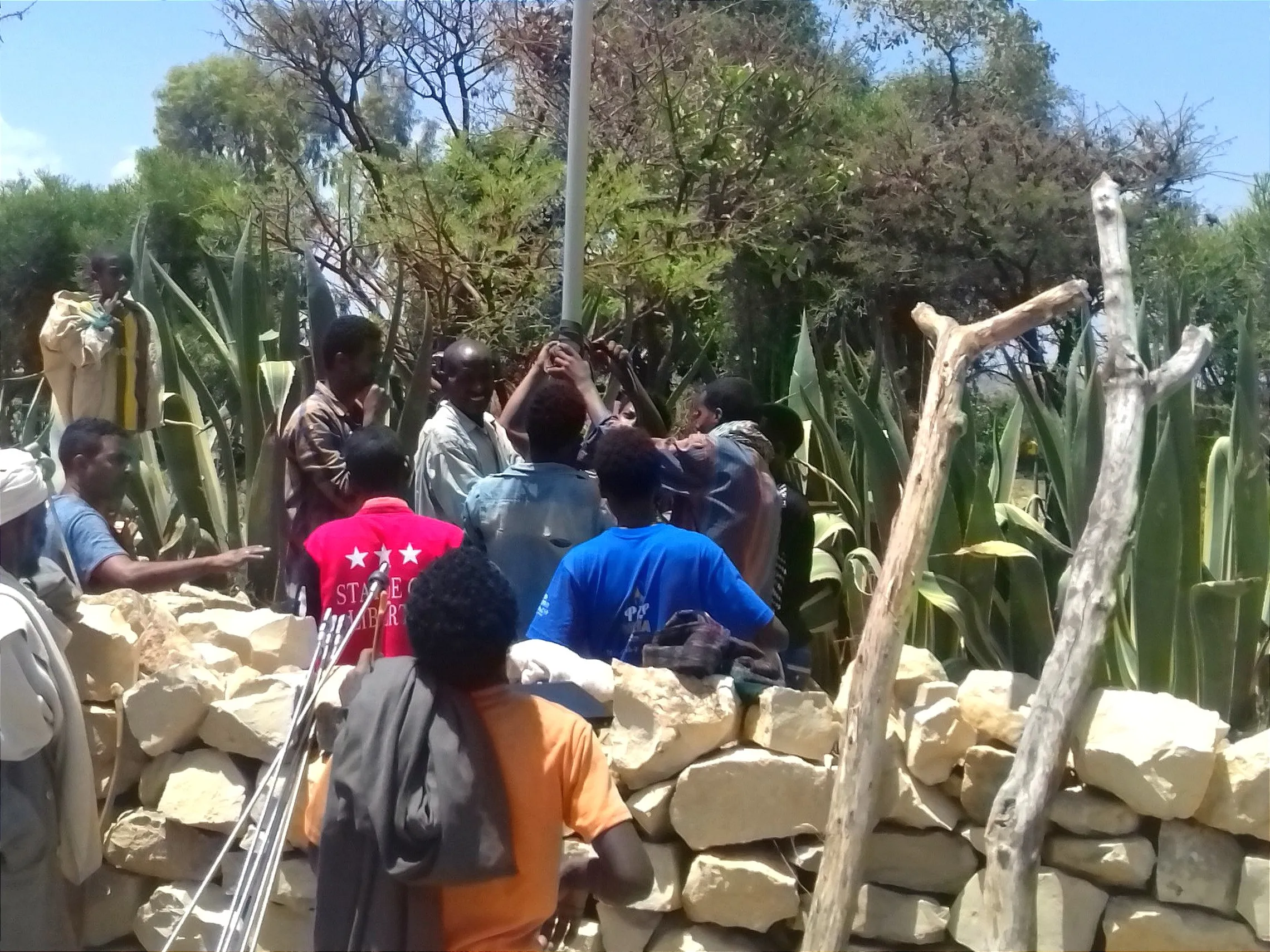Irrigation pathways to food security and water conservation
The drought in Ethiopia is already impacting the lives of 30 million people. At the same time, the country is bracing for its sixth failed rainy season. Ethiopia’s leaders have long set their sights on innovating irrigation systems, more so as the food crisis continues to intensify. In this blog, we share some pointers for the design of sustainable and climate-adaptive small-scale irrigation schemes.

The Food and Agriculture Organization’s (FAO) call to manage water wisely – the theme of this year’s World Food Day – cannot come too soon for Ethiopia. Like many farmers around the world, Ethiopia’s farming communities have learned to adapt to seasonal water scarcity for their subsistence and livelihoods. However, uncertainties caused by the climate crisis, ongoing internal conflicts, and the Ukraine war – a major player in the global food supply, are making adaptation more difficult.
Routine mechanisms to cope with seasonal water scarcity are increasingly becoming ineffective.
Befekadu Kassahun, SNV Project Manager for T-WASH
With Ethiopia only tapping into around 5% of its irrigation potential, the country is now aiming to increase this significantly and rapidly, as rainfed agriculture struggles. Going forward, it is important for countries like Ethiopia to ensure that the pursuit of food does not decimate water resources. Here are some ways to help agricultural water use be sustainable.
Explore new irrigation management models
In the Tigray region, 36 woredas are now implementing a new management model that shares the responsibilities for onsite management between the Irrigation Water User Associations (IWUA) and Private Local Services Providers (PLSPs) – a newly formed group responsible for technical operations and maintenance (O&M). In this model, the IWUA retains its responsibilities of water fee collection and conflict resolution but is now supported by the PLSP whose members manage and conduct repairs.

PLSPs in action
Training and upskilling are key to this management model. It encourages PLSPs to undertake training on plumbing, electro-mechanical, and basic water facilities construction techniques offered in Technical Vocational Education Training (TVET) Centres, which are run by university students. Lessons from TVET are supplemented by essential training on water facilities governance and management by SNV, business development by PSI, and relevant life skills building by IRC.

Highly durable irrigation flumes are needed to weather the wet season. Currently resting on wooden stilts, this metal flume will be turned into an aqueduct flume to make it more resilient.
Promote sustainable agronomy practices to farmers
Irrigation practices that lead to over-abstraction, waste, and water pollution are not acceptable. Efforts to increase farmers’ productivity, incomes, and access to high-yielding seeds while protecting the environment – through sustainable agronomy practices – must become the norm.
Farmer Field Schools (FFS) already set up in the Amhara, Oromia, Sidama, SNNP, and Tigray regions offer a good platform to impart sustainable irrigation agronomy techniques to farmers. To ensure that the goals of making a profit and preserving our ecosystems do not conflict, we must harness the strength of partnerships and create a space for agriculture and water experts to co-design these techniques.
Assess potential of irrigation usage fees to boost financing
In Ethiopia, charging a fee for drinking water is standard practice, but this is not the case yet for small-scale irrigation water users. Charging for irrigated water use is an unexplored funding stream that can boost much-needed financing for PLSP repair of irrigation systems, for the ongoing costs of drinking water facilities – which usually struggle to finance the life-cycle cost of the system – and contribute to vital water resource monitoring activities.

Irrigation mason canal transferring water for agricultural purposes
Improve water data management in catchments
In planning to increase the scale of irrigation, it is essential to accompany this with efforts to build an appropriate water data ecosystem for proper monitoring that integrates with and complements the IWUAs’ own local water knowledge. Doing so will prevent the over-abstraction of groundwater; Ethiopia’s largely untapped but poorly understood ‘invisible’ freshwater resource, that offers some resilience to climatic variability if it is not over-exploited. The country has established twelve river basins so far, many of which are no longer functional and causing conflicts over water and land use.
Climate change has triggered frequent and more severe droughts and erratic rainfall, leading to a decline in the depth and predictability of aquifer recharge in many parts of the world, including Ethiopia. Springs and shallow wells are running dry, and water levels are dropping to critical levels, leading to installed pumps failing to provide adequate water for domestic use, agriculture, and livestock.
Echoing FAO’s call to action, for SNV, irrigation development must be done in partnership because ensuring access to water for all underpins multiple human rights and Sustainable Development Goals. To name a few, it enables our (i) human rights to food, health, and sanitation, (ii) allows us to lead more dignified lives and increases social and economic productivity, and (ii) is instrumental for ecosystem health supporting conflict prevention.
For more information, contact Befekadu Kassahun, by e-mail.
Data for water security
More and better-quality water data is an urgent need for water-insecure parts of the world. This need is heightened in areas where communities largely depend on farming livelihoods.
In a blog from Kenya, we offer recommendations on how to unlock the life-changing impacts of data in achieving water security.